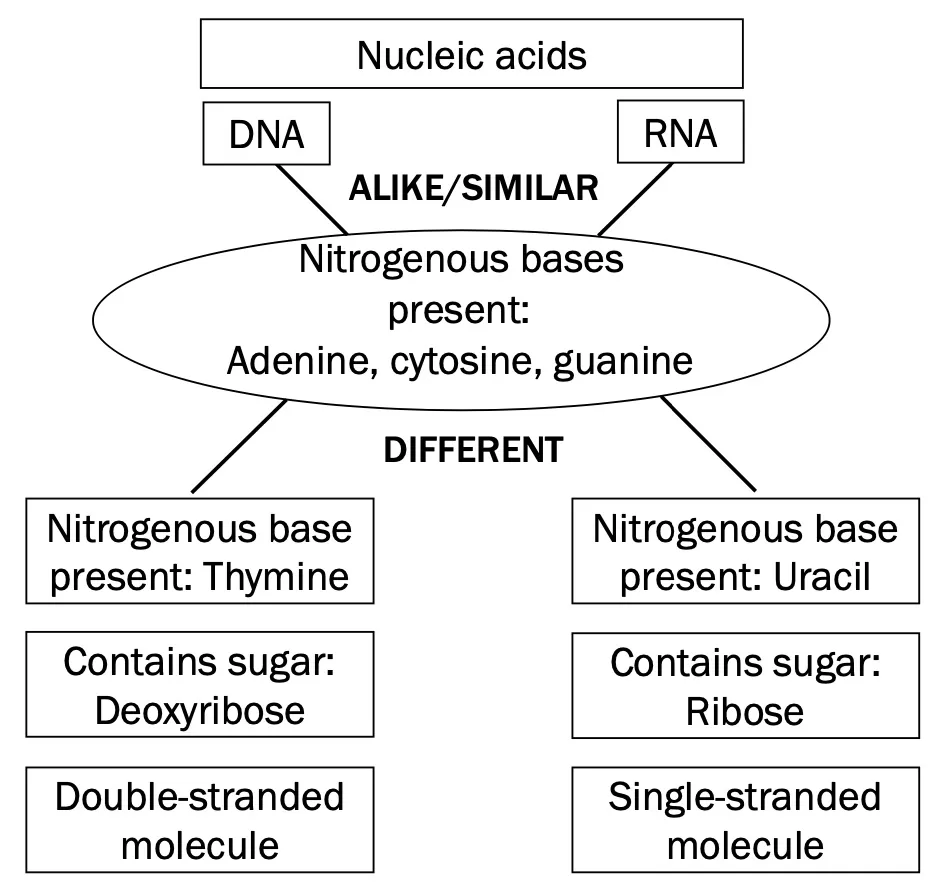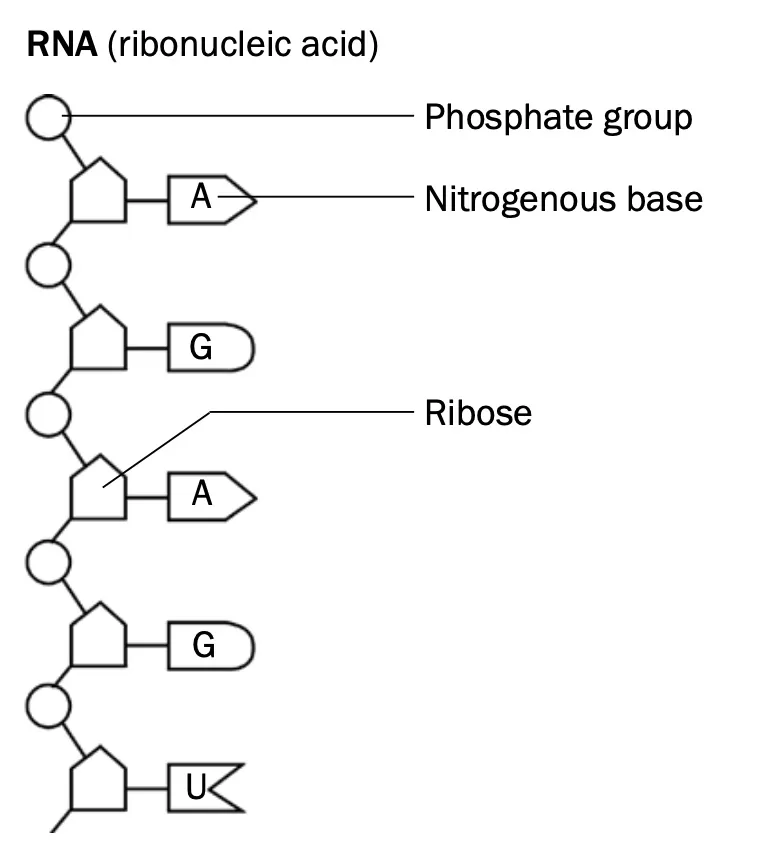The structure of DNA and RNA Grade 12 Life Sciences Notes with Activities Questions and Answers Welcome to the captivating world of molecular biology, where the fundamental building blocks of life lie intricately woven within the structure of DNA and RNA. In Grade 12 Life Sciences, understanding the intricacies of these molecules is not just a prerequisite but a gateway to unraveling the secrets of life itself. In this comprehensive guide, we’ll delve into the structure of DNA and RNA, accompanied by engaging activities, questions, and answers to solidify your grasp on these essential concepts.
The Double Helix: Deciphering the Structure of DNA
Structure: DNA, or deoxyribonucleic acid, is often referred to as the “blueprint of life” for its role in encoding genetic information. Its structure resembles a twisted ladder, known as a double helix, consisting of two long chains made up of nucleotides.
Each nucleotide comprises three components:
- Phosphate Group: Provides the backbone of the DNA strand.
- Deoxyribose Sugar: Connects the phosphate groups and serves as the structural framework.
- Nitrogenous Base: Adenine (A), Thymine (T), Cytosine (C), and Guanine (G). These bases pair up in a complementary manner: A with T and C with G, forming the rungs of the DNA ladder through hydrogen bonds.
Activities:
- Modeling DNA: Utilize pipe cleaners or paper strips to construct a model of the DNA double helix, highlighting the complementary base pairing.
- DNA Extraction: Experiment with DNA extraction from everyday items such as strawberries or bananas, observing the extraction process firsthand.
Questions:
- What are the components of a nucleotide?
- Describe the role of hydrogen bonds in maintaining the structure of DNA.
- Explain the significance of complementary base pairing in DNA replication.
RNA: The Messenger of Genetic Information
Structure: RNA, or ribonucleic acid, is a versatile molecule crucial for various cellular processes, including protein synthesis. Unlike DNA, RNA is single-stranded and contains the sugar ribose instead of deoxyribose. Additionally, RNA contains the nitrogenous base Uracil (U) instead of Thymine (T), which pairs with Adenine (A) during transcription.
Activities:
- Transcription Simulation: Role-play the process of transcription, where DNA is transcribed into RNA by RNA polymerase. Students can act as different components of the transcription machinery to understand the sequential steps involved.
- RNA Folding: Experiment with folding paper strips representing RNA strands into various secondary structures such as hairpins or loops, illustrating the versatility of RNA molecules.
Questions:
- Compare and contrast the structure of DNA and RNA.
- How does RNA differ from DNA in terms of function within the cell?
- Discuss the significance of RNA in protein synthesis.
Notes
- Two kinds of nucleic acids are found in a cell, namely DNA and RNA.
- These two nucleic acids are made of building blocks (or monomers) called nucleotides.
The nitrogenous bases of DNA and RNA in a table format

Question: What nitrogenous base is found in RNA but not in DNA
Answer: Uracil
Comparing and Contrasting the Structure of DNA and RNA
Comparison of DNA and RNA table:

Structure of a DNA
How to recognise a DNA molecule?
You can easily recognise a DNA structure by the following characteristics:
- Double-stranded molecule
- Contains the nitrogenous base thymine (T) instead of uracil (U)
- A always joins with T
- G always joins with C
Structure of RNA
How to recognise an RNA molecule?
- Single-stranded molecule
- Contains the nitrogenous base uracil (U) instead of thymine (T)

Question and Answers Activities:
Find short and long questions for Grade 12 Life Sciences, which will help you to prepare for the exams, tests, practical tasks, and assignments.
EXAM TIP: The structure of the DNA and RNA molecule is very important and is often examined almost every year in Grade 12. Make sure that you know the labels of each component. Remember to label the diagram first and then move onto the questions